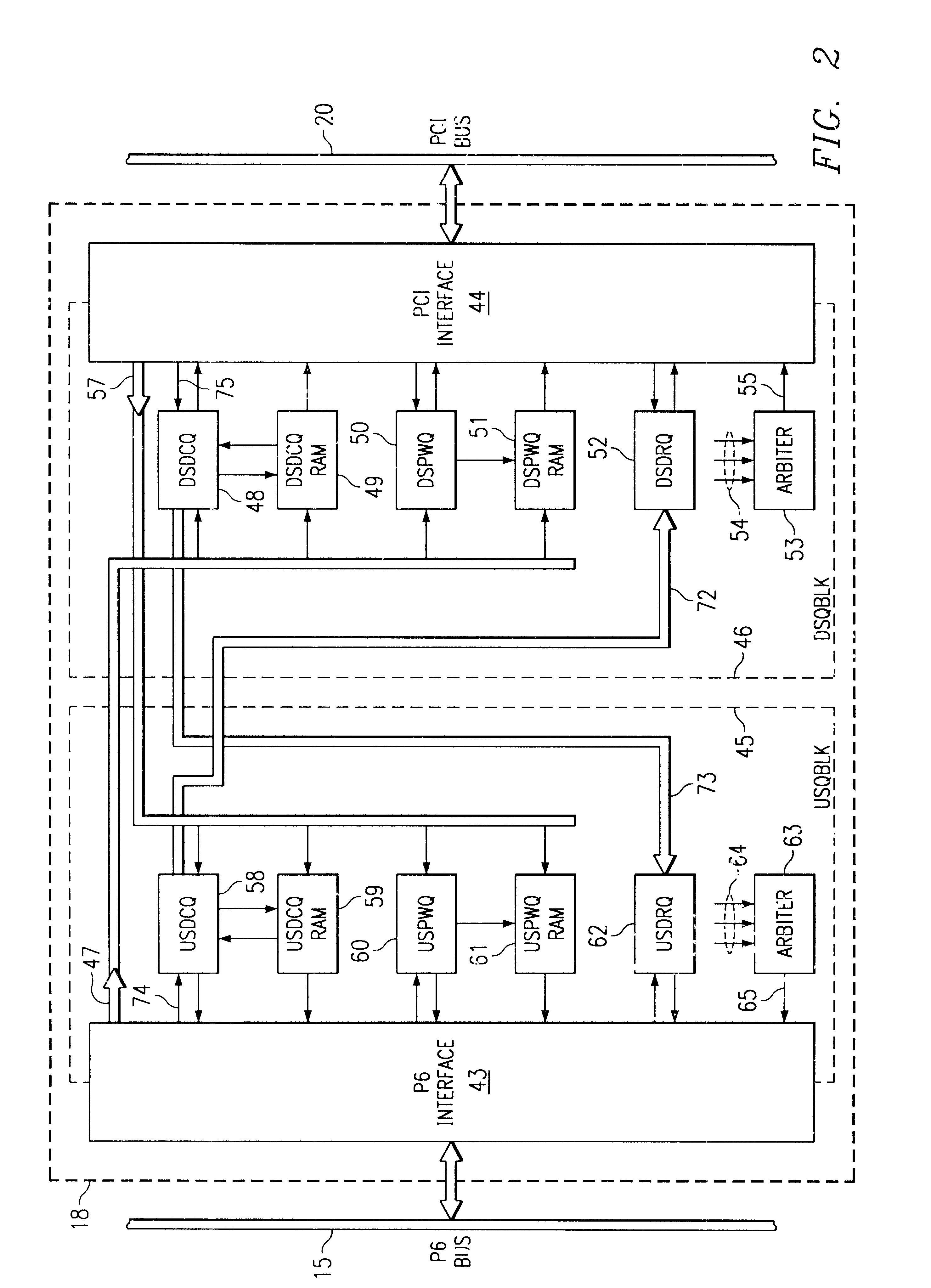Bus-to-bus bridge in computer system, with fast burst memory range
a computer system and bus-to-bus technology, applied in the field of computer systems, can solve problems such as destroying the benefits of superpipelining on the p6 bus
- Summary
- Abstract
- Description
- Claims
- Application Information
AI Technical Summary
Benefits of technology
Problems solved by technology
Method used
Image
Examples
Embodiment Construction
Referring to FIG. 1, a computer system 10 is shown which may use features of the invention, according to one embodiment. The system includes multiple processors 11, 12, 13 and 14 in this example, although the improvements may be used in a single processor environment. The processors are of the type manufactured and sold by Intel Corporation under the trade name PENTIUM PRO, although the processors are also referred to as "P6" devices. The structure and operation of these processors 11, 12, 13, and 14 are described in detail in the above-mentioned Intel publications, as well as in numerous other publications. The processors are connected to a processor bus 15 which is generally of the structure specified by the processor specification, in this case a Pentium Pro specification. The bus 15 operates at a submultiple of the processor clock, so if the processors are 166 MHz or 200 MHz devices, for example, then the bus 15 is operated based on some multiple of the base clock rate. The main...
PUM
 Login to View More
Login to View More Abstract
Description
Claims
Application Information
 Login to View More
Login to View More - R&D
- Intellectual Property
- Life Sciences
- Materials
- Tech Scout
- Unparalleled Data Quality
- Higher Quality Content
- 60% Fewer Hallucinations
Browse by: Latest US Patents, China's latest patents, Technical Efficacy Thesaurus, Application Domain, Technology Topic, Popular Technical Reports.
© 2025 PatSnap. All rights reserved.Legal|Privacy policy|Modern Slavery Act Transparency Statement|Sitemap|About US| Contact US: help@patsnap.com



